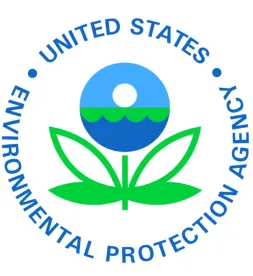On January 13, 2017, the U.S. Environmental Protection Agency (EPA) published its much anticipated proposed rule to "reset" the Toxic Substances Control Act (TSCA) Chemical Substance Inventory, or more precisely, to subdivide the Inventory into separate lists of "active" and "inactive" substances. 82 Fed Reg. 4,255. The proposal sets forth details of the applicable notification requirements, and establishes exemptions and procedures for handling confidentiality claims. EPA is proposing to require use of the Central Data Exchange (CDX), the Agency's electronic reporting portal. Comments on the proposal must be received by March 14, 2017.
The proposal would require "retrospective" notification - no later than 180 days after the final rule is published - for substances listed on the TSCA Inventory and that were manufactured in or imported into the U.S. for non-exempt commercial purposes between June 21, 2006 and June 21, 2016 (the "lookback period"). Notifications for substances that were "processed" during this period would not be required but would be accepted. Properly notified substances would be designated by EPA as "active." Substances subject to active designation but for which no valid notice is received would be designated as "inactive."
Once so designated, Inventory-listed "inactive" substances could not properly be manufactured, imported, or processed for a non-exempt commercial purpose under TSCA. Thus, EPA also is proposing "forward-looking" procedures for notifying inactive substances if and when non-exempt manufacture, import, or processing is expected to resume. Properly notified substances would be converted by EPA to "active" substances.
Background
On June 22, 2016, TSCA was amended by the Frank R. Lautenberg Chemical Safety for the 21st Century Act. The amendments provided for designation of and requirements for "active" and "inactive" substances on the Inventory under the authority of TSCA section 8.
New section 8(b)(4)(A) requires EPA to promulgate a rule that requires manufacturers and importers (and that "may" require processors) to notify the Agency, no later than 180 days after the date the final rule is published in the Federal Register, of each non-exempt Inventory-listed substance that was manufactured or imported during the lookback period. Properly notified substances must be designated by EPA as "active." Substances that are subject to designation but for which no valid notice is received must be designated by EPA as "inactive."
New section 8(b)(5)(B) requires persons that intend to manufacture, import, or process a substance for a non-exempt purpose that is designated as inactive to notify EPA in advance of those activities. Upon receiving a valid notice, EPA must change the designation of the notified substance from inactive to active.
Scope and Exemptions
The reporting requirements covered by the proposal would apply only to Inventory-listed substances. Thus, for example, substances manufactured or imported under the TSCA "low volume exemption" would not be subject to reporting. Substances added to the Inventory on or after June 22, 2016 would be automatically designated as active and need not be reported.
Substances that appear on both the non-confidential (i.e., "public") portion of the Inventory and on EPA's "interim list" of active substances would not be required to be reported. It is important to note that this reporting exemption does not include substances that appear on the confidential portion of the Inventory; these substances must be retrospectively reported.
This "interim" active list would include substances reported by any company under the 2012 TSCA section 8(a) Chemical Data Reporting (CDR) rule as having been manufactured or imported in 2010 or 2011. After EPA compiles a publicly accessible list of substances that were reported for the 2016 CDR as having been manufactured in 2012, 2013, 2014, or 2015, the list would be expanded to include any additional substances accordingly.
Exemptions from reporting under the proposal mirror the PMN rule exemptions at 40 C.F.R. 720.30, except that export-only substances are subject to reporting. Unlike the CDR rule, there are no exemptions for certain polymers and low volume substances. Certain "naturally occurring" substances are proposed to be exempted; these substances will be categorically designated as "active."
Procedures and Timing
EPA has developed and will require notifiers to use newly developed proposed "Notice of Activity" (NOA) reporting forms. NOA "Form A" would be used by manufacturers, importers, and processors for retrospective reporting. NOA "Form B" would be used by manufacturers, importers, and processors for forward-looking reporting. The proposed forms are based on the well-known TSCA Notice of Commencement (NOC) form, as the proposed information requirements are substantially similar.
Processors are not required, but may voluntarily report during the retrospective reporting period. However, because once EPA has designated a substance as inactive its processing is prohibited under TSCA, the proposal allows processors to report during the retrospective reporting period and would apply to any substance processed for a non-exempt purpose during the 10-year window.
The proposed rule would require manufacturers and importers to "retrospectively" report not later than 180 days after the final rule is published in the Federal Register, and processors to report no later than 360 days after the final rule is published in the Federal Register. "Forward-looking" reports must not be submitted more than 30 days before the actual date of manufacturing, importing, or processing.
The rule sets forth procedures for filing "joint" submissions when specific chemical identity information is claimed confidential by a supplier. Similar to the PMN rule, procedures also exist for foreign suppliers to provide proprietary chemical identity information directly to EPA.
Required Information
Persons reporting for the retrospective reporting period would be required to submit fairly limited information, including chemical identity, type of commercial activity (i.e., manufacture vs. import), date range of manufacture or import during the lookback period, and whether the reporter seeks to maintain an existing CBI claim for a confidential chemical identity. Forward-looking reporters would have to provide similar information, and must include the actual date by which the inactive substance is to be domestically manufactured, imported, or processed.
Confidentiality
Under the proposal, "retrospective" reporters using Form A would be able to seek to maintain an "existing" CBI claim for specific chemical identity (for substances listed on the confidential Inventory only). There would be no mandatory CBI substantiation requirements for chemical identity requests in the Form A, but if they so desired, companies would be allowed to submit substantiation at the same time that the Form A is filed, which, if received by EPA less than five years before the date on which substantiation is due under section 8(b)(4)(D)(i), would obviate the need for further substantiations under this section.
Requests to maintain existing CBI claims for specific chemical identity for "forward-looking" reporting on Form B (for substances listed on the confidential Inventory only) must be made on the Form B and substantiated not later than 30 days after submitting the Form B. EPA notes, however, that it might be more efficient to provide the substantiation for a CBI claim for specific chemical identity at the time of filing.
Opportunity to Comment
The proposed rule is open for comment until March 14, 2017. Potential issues include:
(1) Clarification as to whether polymers manufactured under the pre-1995 polymer exemption rule need to be reported, as technically such polymers are listed on the Inventory.
(2) Providing an alternative to CDX reporting for processors who may not have experience using the electronic reporting platform.
(3) Documentation needed to establish manufacture, import, or processing during the relevant 10-year period.
(4) Extension of the exemption for 2012/2016 CDR reported chemicals to include chemicals appearing on the non-public portion of the Inventory.





 />i
/>i

